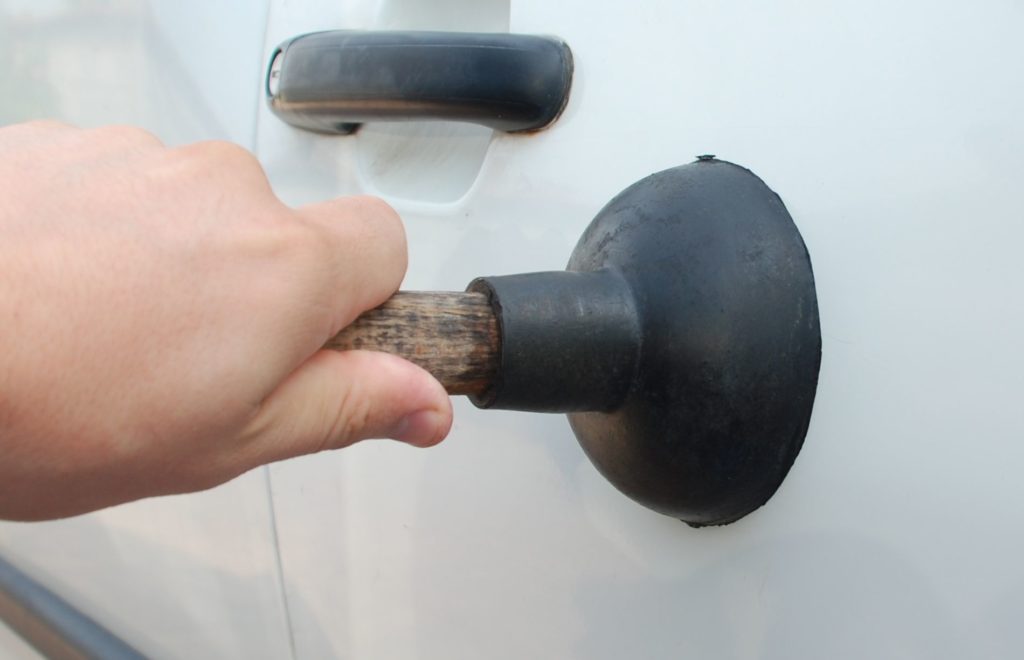Even the highest quality of protector does not guarantee to maintain the integrity of the car body while driving on bumpy roads. Previously, for fixing a shallow dent on the car body, the mechanic from car dent repair in Gurgaon had to spend a lot of time and effort on putty, primer, and painting the damaged area. Modern technologies have made it possible to quickly and efficiently correct small defects without subsequent painting in places where the paintwork remains intact without cracking.
The causes of dents
Dents on the car body are one of the most common defects that require local repair.
The main reasons for the formation of dents:
- Dents on the roof, on the hood, trunk, received from large hail and icicles.
- Accidents, collisions.
- Door dents, point contacts with hard objects.
- Vandalism, burglary attempts.
- Damage to body stiffeners.
Initial body inspection
A car dent repair starts with a car wash at home Gurgaon, drying the surface, and thoroughly examining the car. Next, a visual inspection is carried out in bright lights. It is necessary in order not to miss very small defects on the surface. At this stage, the mechanics determines:
- where the damage is located;
- the number of dents, their size and depth;
- the level of complexity of defects;
- what is the state of the paintwork;
- what method of body restoration is best for each case;
- what tools and devices will be needed.
Aligning dents using paintless dent repair tools:
Paintless dent repair tools are used in critical cases when it is necessary to repair numerous serious damage to the car body in hard-to-reach places.
Tools included in professional paint-free equipment:
- measuring instruments;
- tables;
- PDR hooks with a diameter of 4-14 mm;
- fixtures of various configurations, bending angles and lengths;
- levers, hammers, punches, fluoroplastic bumpers;
- suspensions, suction cups, hoods, expansion cushions;
- accessories for professional lighting (LED lamps, diffusers, tripods, batteries, shades, etc.);
- glue equipment (hot glue, heat gun, reverse hammers, clips, mini lifters, Pops a Dent sets, etc.).
Stages of dent removal with PDR tools:
If it is impossible to reach the place of damage to the hood, door, and body, the inner lining of the components are removed, and some components are dismantled.
Work order:
- Providing a convenient approach (if necessary, dismantling of parts).
- Reducing the stress of the metal in the damaged area by heating to + 40 ° C with an industrial hair dryer.
- Pulling hot metal.
- Tapping with a PTFE hammer around the edges of the dent to relieve stress by lowering the elevation.
- Gradual pressure on the inner surface from the back side until the concave metal is completely aligned.
- Polishing.
Mechanical leveling from the inside using a lever:
The internal extrusion method is the most effective and gentle method for working with metal and thick paint layers. Similar to any manual work, this technique requires high professionalism and certain skills. Using this method, mechanics apply pressure from the inside, which gradually decreases the internal stress, making the surface return to its original state.
Execution technique:
- The mechanic puts the tool inside the body space through the nearest technological hole.
- Positions the end of the arm in a specific area.
- Begins to gently press on the dent from the inside, trying to flatten the metal.
- If the point of force action is selected correctly, a characteristic click is heard after a few gentle clicks.
- It means that the defect has been repaired and no painting is required.
